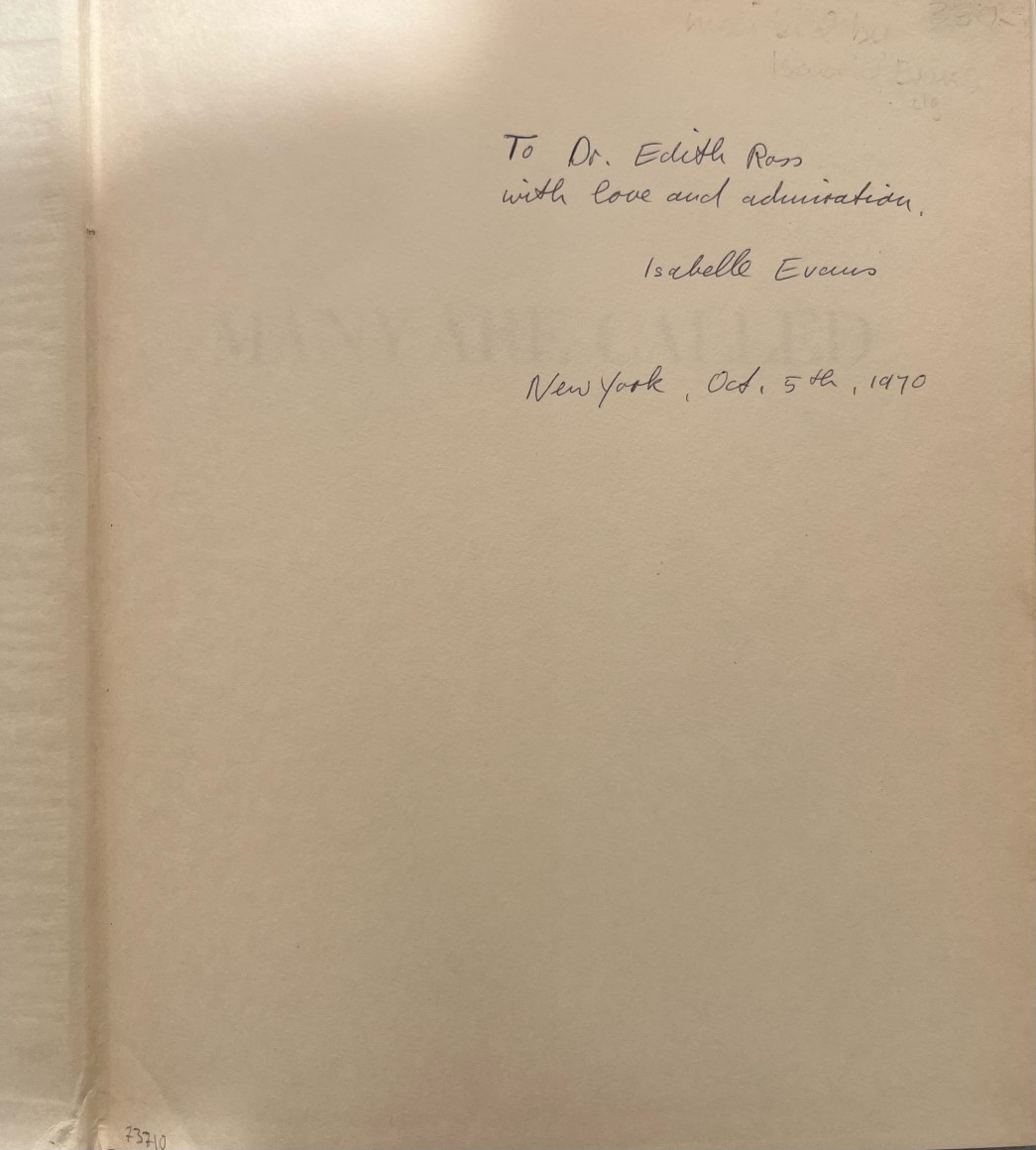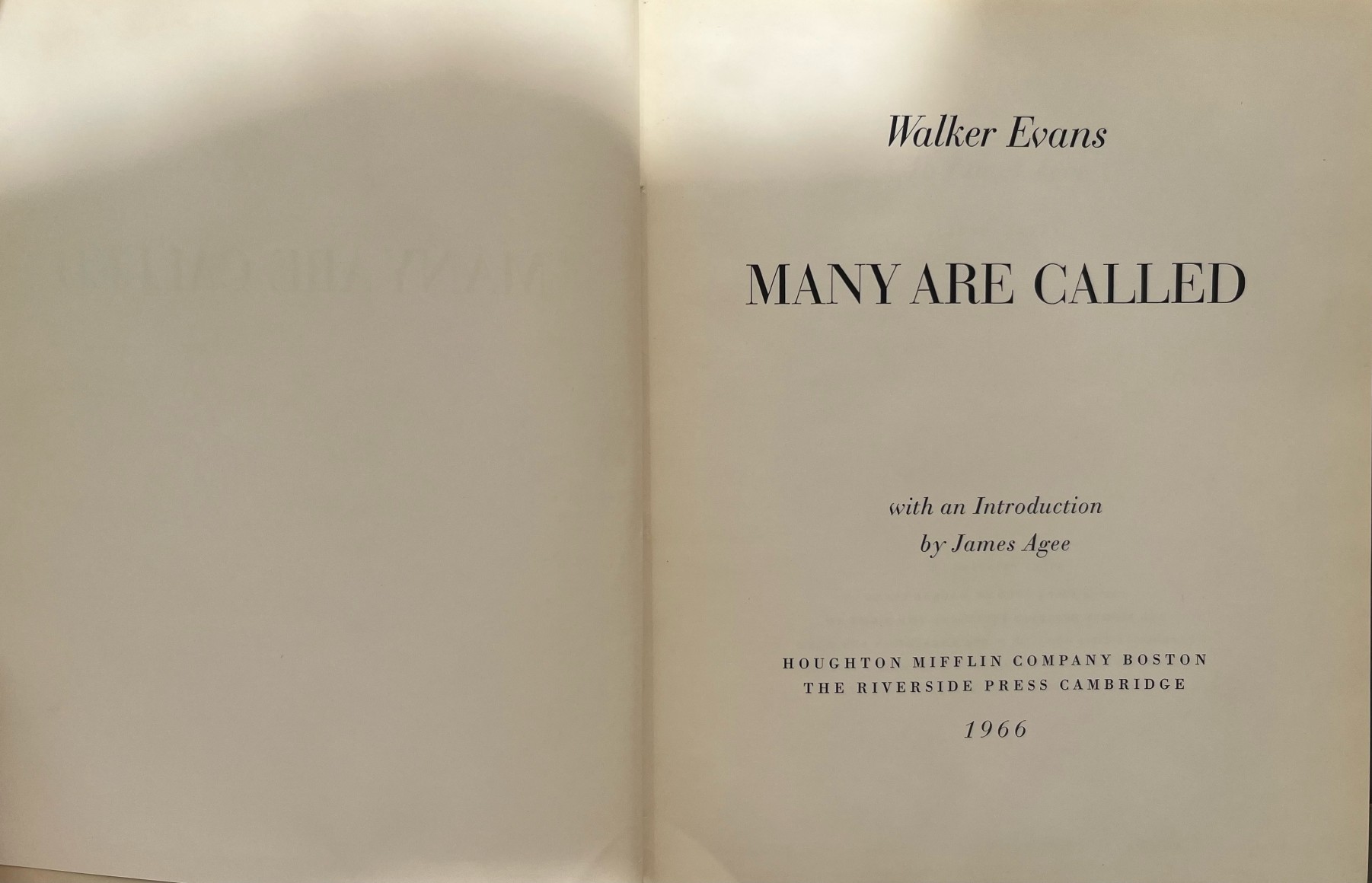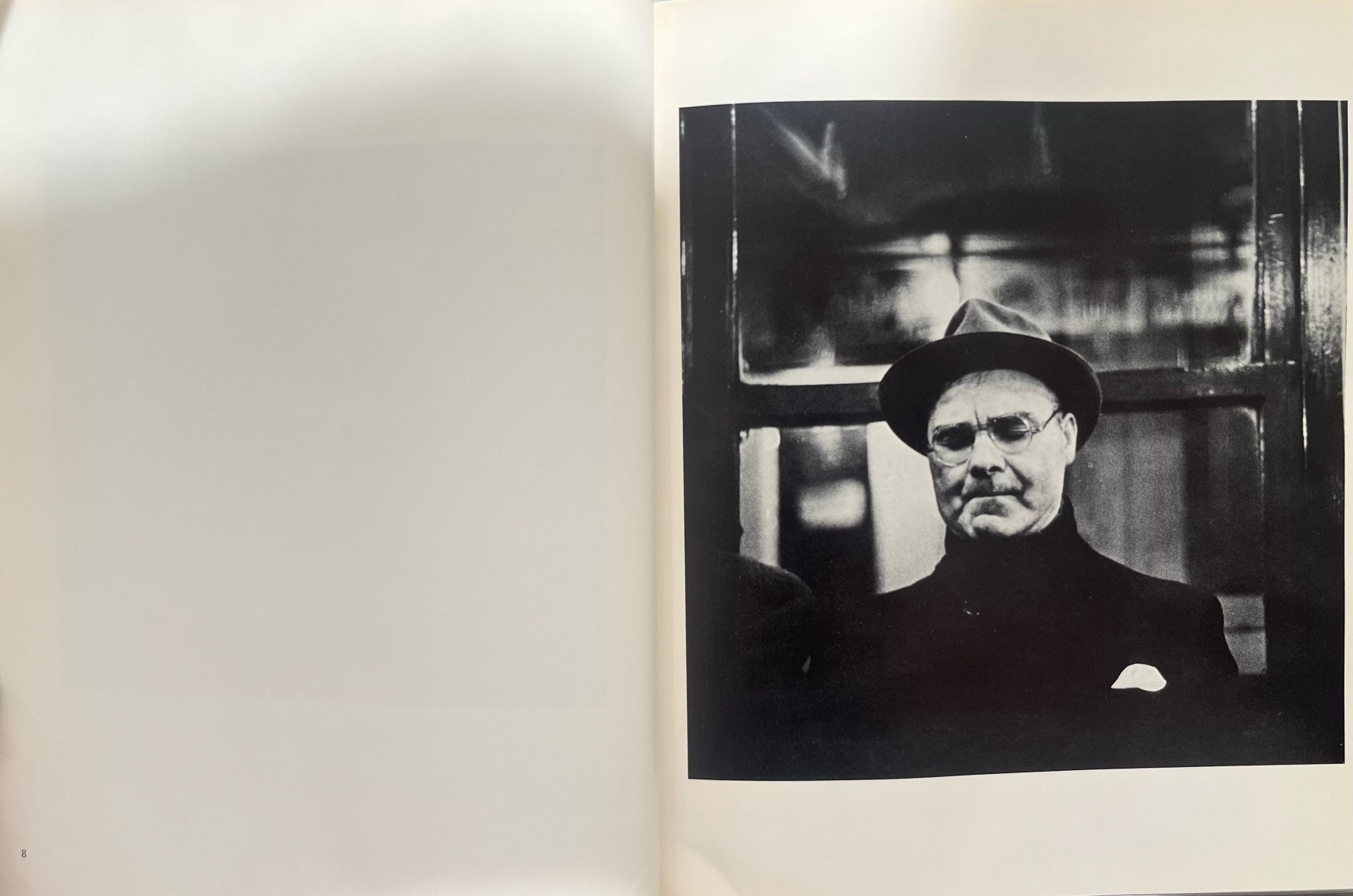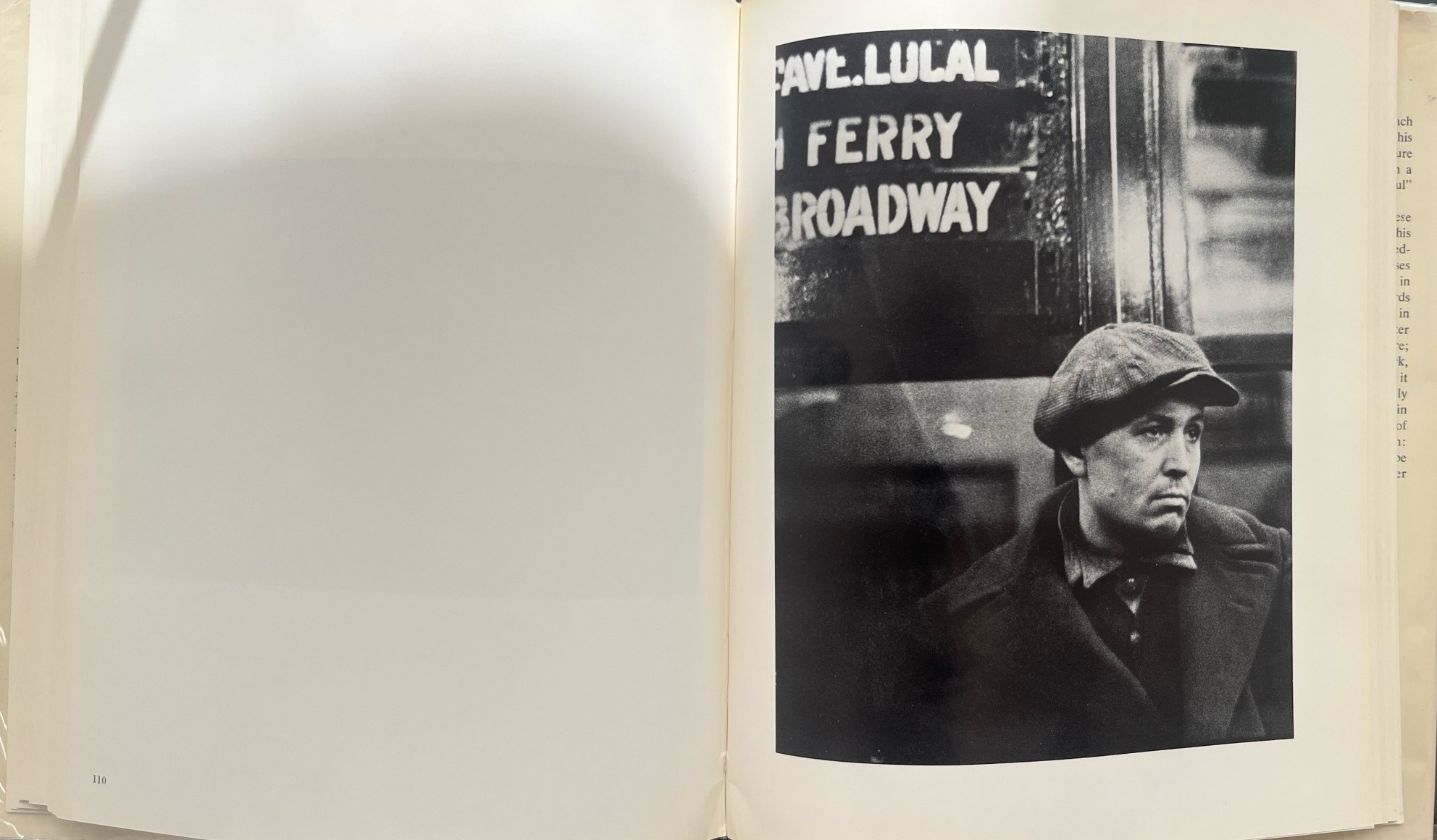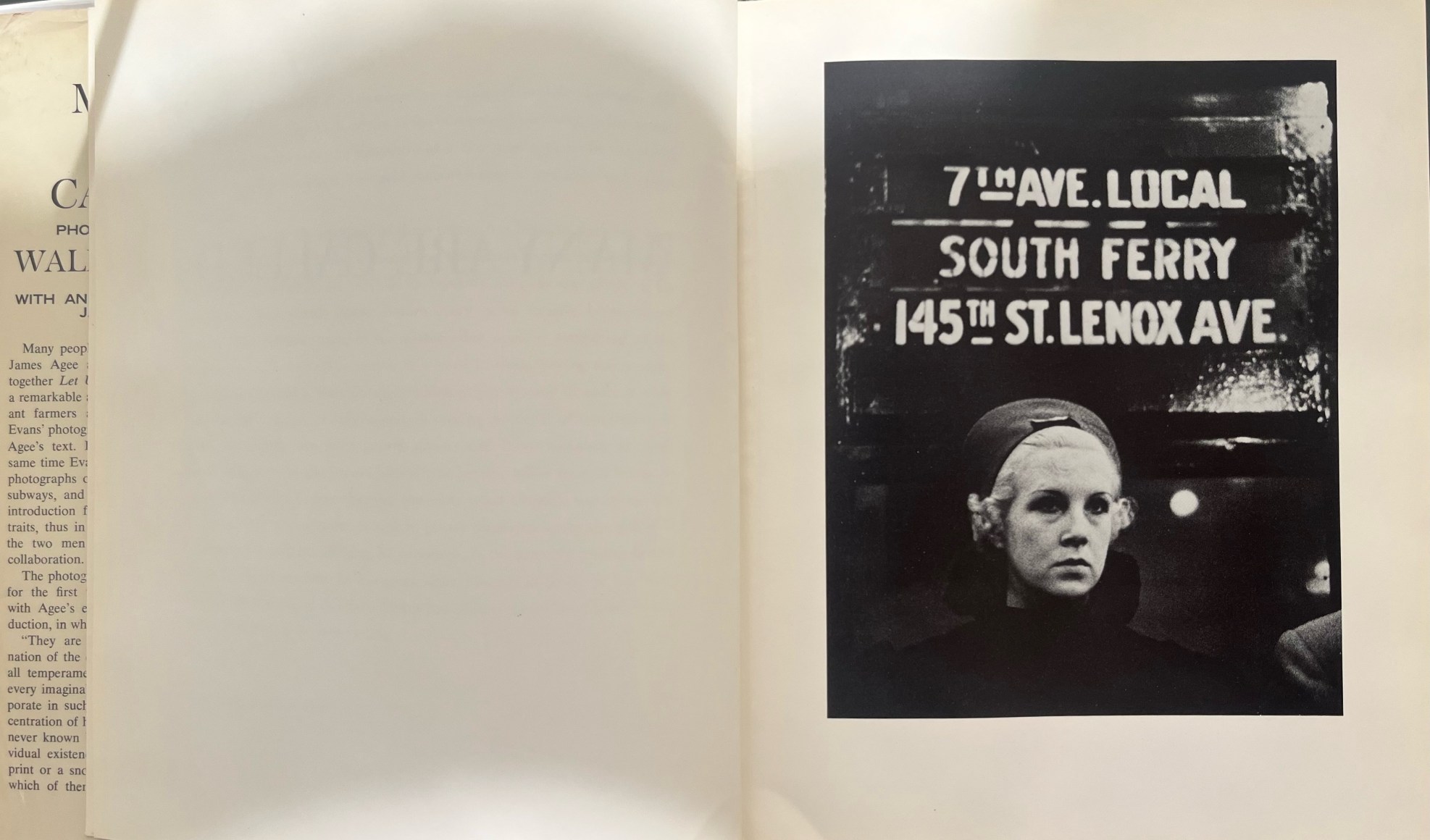Many Are Called, 1966
Author: Walker Evans
Essay by: James Agee
Publisher: Houghton Mifflin Company, Boston and The Riverside Press, Cambridge
About the book:
Although Walker Evans tends to be associated primarily with large-format view camera photographs, which utilize the medium's descriptive faculty, throughout his career he was also passionately interested in the small camera and the rather more spontaneous side of photography. Indeed, he rarely used a view camera after about 1940. Another interest was vernacular photography, anonymous imagery that not only displayed spontaneity, but seemed to have been made by the unaided camera alone. Several times in his career, he combined these interests to investigate the process of photographing, by making spontaneous, improvised images for which he relinquished as much control as he could to the camera itself.
In his subway series (shot from around 1938 and into the 1940s, but only published in 1966), Evans concealed a Contax camera beneath his coat, so that he could snap subway passengers without their knowledge. Framing and focusing were left somewhat to chance, the only conscious decision being when to release the shutter. This, of course, is usually the most important decision that any photographer makes.
The results are remarkably vibrant and sympathetic. The book builds like a series of film stills, each anonymous life segueing into the next. These travellers are largely devoid of overt signs of class (though one assumes that the rich avoid the subway), united by the wearying business of burrowing underground like moles. And yet, on closer inspection, the book's tone seems more positive. It speaks less of a population wearied by the vicissitudes of urban life, than of the way in which people simply withdraw into themselves during the interlude of travel between work and home. Evans's subway passengers may be lost souls, but they are also souls lost in thought.


